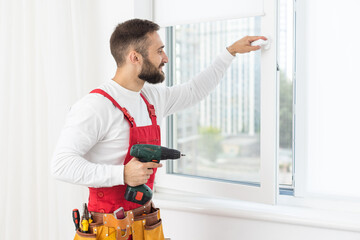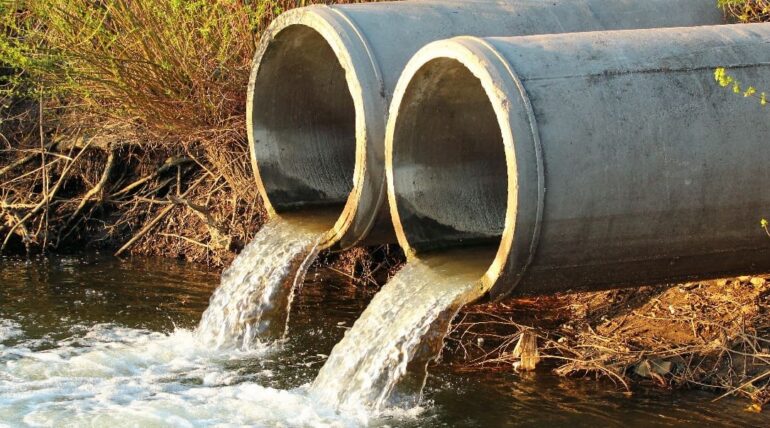Landscaping transforms outdoor spaces into visually appealing and functional areas. It involves the strategic arrangement of plants, structures, and natural elements. Skilled landscapers blend creativity with technical knowledge to create balanced designs. Proper landscaping enhances the beauty and utility of a space.
Modern landscaping focuses on creating harmony between nature and human use. It considers factors such as soil health, climate, and plant compatibility. Landscapers Fayetteville AR carefully select materials and plants suited to the environment. This ensures long-term sustainability and growth.
A well-designed landscape enhances property value. Attractive outdoor spaces increase the appeal of homes and commercial buildings. Landscaping creates a welcoming atmosphere for residents and visitors. Proper maintenance preserves the beauty and function of the space.
Landscapers use various techniques to achieve a cohesive design. Layering plants based on height and texture creates depth. Mixing evergreen and seasonal plants provides year-round color. Natural elements like stones and water features add character to the design.
Soil preparation is essential for successful landscaping. Healthy soil supports plant growth and water retention. Adding compost and organic matter improves soil structure. Proper grading ensures efficient drainage and prevents erosion.
Plant selection plays a key role in landscaping. Native plants are often preferred for their adaptability and low maintenance. Drought-resistant species reduce water usage and improve sustainability. A mix of trees, shrubs, and flowers creates visual variety.
Landscapers consider sunlight and shade patterns when planning layouts. Some plants thrive in full sun, while others prefer partial or full shade. Understanding these preferences ensures optimal growth. Strategic planting maximizes light exposure and protection.
Water features enhance the sensory experience of a landscape. Fountains, ponds, and waterfalls create soothing sounds and visual interest. Proper installation ensures efficient water flow and maintenance. Water plants and fish can add life to these features.
Pathways and walkways improve the functionality of a landscape. Gravel, stone, and brick provide durable surfaces. Curved paths create a natural flow through the space. Proper spacing and materials prevent slipping and uneven surfaces.
Hardscaping elements add structure and definition to landscapes. Retaining walls prevent soil erosion and create elevation changes. Patios and decks extend living spaces into the outdoors. Proper material selection ensures durability and weather resistance.
Lighting enhances the beauty and safety of a landscape. Soft lights highlight plants and architectural features. Pathway lights improve visibility and prevent accidents. Solar-powered options provide energy-efficient solutions.
Landscapers often incorporate eco-friendly practices into their designs. Rain gardens capture runoff and reduce water waste. Permeable paving allows water to soak into the ground. Composting and mulching improve soil health naturally.
Seasonal changes influence landscaping maintenance. Spring and summer require watering and pruning. Fall involves leaf removal and soil preparation. Winter care includes protecting plants from frost and snow damage.
Outdoor seating areas enhance the usability of a landscape. Benches, chairs, and pergolas create inviting spaces. Comfortable and weather-resistant materials improve longevity. Shaded areas provide relief from sun exposure.
Vertical gardens maximize space in small areas. Wall-mounted planters and trellises create green walls. Climbing plants add texture and depth to the design. Proper support and watering systems ensure healthy growth.
Landscapers also design for privacy and noise reduction. Tall hedges and trees block unwanted views and sound. Fencing and decorative screens add structure and security. Proper placement enhances comfort and seclusion.
Irrigation systems ensure consistent watering. Drip irrigation reduces water waste and delivers moisture directly to roots. Timed systems provide automated care. Efficient watering supports healthy plant growth and reduces maintenance.
Edging creates clean lines between planting areas and walkways. Stone, metal, and plastic borders prevent grass and mulch from mixing. Defined edges improve the overall appearance of the landscape. Proper installation ensures lasting results.
Landscapers address soil erosion through strategic planting. Deep-rooted plants anchor soil and prevent runoff. Ground covers provide a protective layer against wind and rain. Proper drainage systems direct water flow away from vulnerable areas.
Wildlife-friendly landscaping supports local ecosystems. Native plants attract pollinators and beneficial insects. Bird feeders and water sources create a habitat for wildlife. Balanced designs support biodiversity and environmental health.
Color theory influences landscape design. Warm tones create energy and excitement. Cool tones evoke calmness and relaxation. Balanced color combinations enhance visual appeal. Seasonal plants maintain color variety throughout the year.
Landscapers often use texture to add depth to a design. Smooth leaves contrast with rough bark and stone. Soft grasses complement rigid structural elements. Mixing textures creates a balanced and inviting atmosphere.
Shade structures protect plants and people from harsh sunlight. Pergolas and arbors provide filtered light. Shade cloths and large trees create cool resting spots. Proper placement enhances comfort and plant health.
Rainwater harvesting supports sustainable landscaping. Collecting runoff reduces dependency on municipal water. Stored water is used for irrigation and cleaning. Proper filtration prevents contamination and ensures safe use.
Landscapers incorporate symmetry and balance in their designs. Mirroring plants and structures creates a sense of order. Asymmetry adds visual interest and a natural feel. Blending both approaches ensures a harmonious design.
Perennial plants provide long-term beauty and structure. Their deep roots improve soil health and reduce erosion. Annual plants add seasonal color and variety. Combining both types maintains visual interest throughout the year.
Windbreaks protect landscapes from strong winds. Rows of trees and shrubs create natural barriers. Fences and walls provide additional protection. Proper positioning prevents wind damage and improves comfort.
Landscapers use reflective surfaces to enhance lighting. Mirrors and glass reflect sunlight into shaded areas. Water features create shimmering effects. Proper placement improves brightness and atmosphere.
Sustainable landscaping reduces waste and energy use. Recycled materials provide eco-friendly options for hardscaping. Compost and organic fertilizers improve soil health naturally. Efficient systems reduce resource consumption and costs.
Landscapers adapt designs to different climates. Dry regions require drought-resistant plants and gravel beds. Humid areas benefit from moisture-tolerant species. Climate-specific designs ensure long-term success and minimal maintenance.
Outdoor kitchens extend living spaces into the landscape. Grills, sinks, and countertops create functional cooking areas. Durable materials resist weather and wear. Proper ventilation and safety measures improve usability.
Landscaping around pools requires careful planning. Slip-resistant surfaces improve safety. Shade structures and plants provide comfort. Proper drainage prevents water pooling and erosion.
Pet-friendly landscaping includes safe plants and surfaces. Artificial turf provides a low-maintenance play area. Fencing ensures pets remain secure. Non-toxic plants prevent accidental poisoning.
Landscapers use natural barriers to define spaces. Hedges and trees create visual separation. Stone walls and fences provide structural definition. Proper spacing and height improve balance and flow.
Drought-resistant landscaping reduces water usage. Succulents and cacti thrive in dry conditions. Mulch and gravel retain moisture and reduce evaporation. Efficient irrigation supports plant health.
Fragrant plants enhance the sensory experience of a landscape. Lavender, rosemary, and jasmine provide soothing aromas. Proper placement near seating areas enhances relaxation. Scented flowers attract pollinators and wildlife.
Landscaping supports mental health and well-being. Green spaces reduce stress and improve mood. Quiet areas with water features promote relaxation. Balanced designs create a sense of calm and order.
Functional landscaping improves accessibility. Wide, even pathways accommodate wheelchairs and strollers. Raised garden beds reduce bending and strain. Proper lighting and signage improve navigation.
Landscapers integrate smart technology into modern designs. Automated lighting and irrigation systems improve efficiency. Weather sensors adjust watering schedules based on conditions. Smart systems reduce maintenance and resource use.
Fire-resistant landscaping protects properties in dry areas. Firebreaks and non-flammable plants reduce risk. Gravel and stone provide safe ground cover. Proper planning improves safety and resilience.
Landscapers create multi-use spaces to maximize functionality. Open lawns provide room for play and relaxation. Seating areas support social gatherings. Flexible designs adapt to different needs and events.
The future of landscaping involves eco-conscious practices and innovative design. Sustainable materials and efficient systems reduce environmental impact. Thoughtful planning ensures long-term beauty and functionality. Modern landscaping balances human needs with environmental health.





